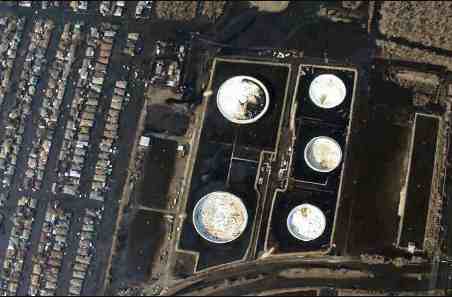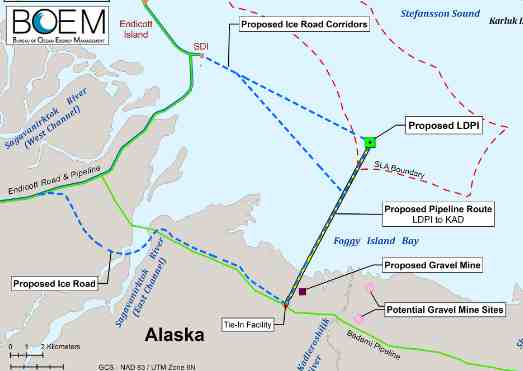
ANCHORAGE— A series of hearings opens in Alaska today on a proposal by Hilcorp Alaska to build an artificial oil drilling island and underwater pipeline in the Beaufort Sea. If approved, Hilcorp’s “Liberty” would be the first offshore drilling development project in federal Arctic waters, where President Trump has called for more leasing to oil companies.
The Center for Biological Diversity and other groups concerned about the possibility of major oil spills in this unforgiving environment will testify against the project at the Oct. 10 hearing in Anchorage.
“Giving us Liberty could give us the death of imperiled whales and polar bears. Conditions in the Arctic are brutal, and a major oil spill in this remote location would be impossible to clean up,” said Kristen Monsell, a senior attorney with the Center. “There are too many things that could go wrong with this project to take such a big risk.”
The U.S. Bureau of Ocean Energy Management will hold five public hearings on the Liberty Project Draft Environment Impact Statement from Oct. 2 through Oct. 10 and will accept written public comments until Nov. 18. The project involves construction of an 9.3-acre artificial island with a 24-acre footprint in about 20 feet of water and a 5.6-mile pipeline under Arctic waters to send the oil into onshore pipelines. Hilcorp took over management of the Liberty project from BP in 2014.
The Alaska hearings are from 7-10 p.m. on Oct. 2 in Nuiqusut, Oct. 3 in Fairbanks, Oct. 4 in Kaktovik, Oct. 5 in Utquagvik/Barrow and Oct. 10 in Anchorage (in the Dena’ina Civic and Convention Center, 600 W. 7th St.). Details are at https://www.boem.gov/Hilcorp-Liberty.
“A real environmental disclosure would show there’s no safe way to drill in the Arctic. Hilcorp’s track record of spills and safety violations offers another reason why Trump must reject this project ,” Monsell said. “This is a bad deal for Alaskans and American taxpayers who will be paying the price for this project for generations to come.”
Background
The project’s environmental analysis predicts the project will cause at least 70 oil spills during its estimated 25-year lifetime. And if a blowout occurs, the project could result in a catastrophic spill of up to 4.6 million barrels of oil, about the same volume as the BP Deepwater Horizon disaster.
Rapidly changing conditions in the Arctic, which is warming at twice the global rate, create serious engineering challenges for this and other major infrastructure projects. Among the threats to Liberty outlined in project documents are land subsidence due to permafrost thaw and deep gouges from the sea ice that covers the area for most of the year.
The environmental study says the project will harm fish, marine mammals, coastal birds, air and water quality and climate change. For example, the review finds that construction of the project could contribute to the injury and death of polar bears. The project would also destroy parts of the Boulder Patch, a unique series of underwater boulders and cobbles that supports the richest and most biologically diverse communities of aquatic life in the Beaufort Sea.[xyz-ihs snippet=”Adsense-responsive”]Concerns about Hilcorp’s ability to build and manage the project were heightened earlier this year when its underwater gas pipeline in Alaska’s Cook Inlet leaked for nearly four months because the company said the presence of sea ice prevented its repair. Hilcorp has been aggressively expanding its Alaska fossil fuel holdings, spending more than $3 million to lease 14 new Cook Inlet tracts in federal waters June. Hilcorp has also been the most heavily fined oil company in Alaska in recent years, with state regulators writing “disregard for regulatory compliance is endemic to Hilcorp’s approach to its Alaska operations.”
Hilcorp expects to extract about 167 million barrels of oil from the Liberty project. Drilling for and consuming that oil would result in about 64.5 million metric tons of carbon dioxide equivalent of greenhouse gas pollution being emitted into the atmosphere, worsening climate change.








